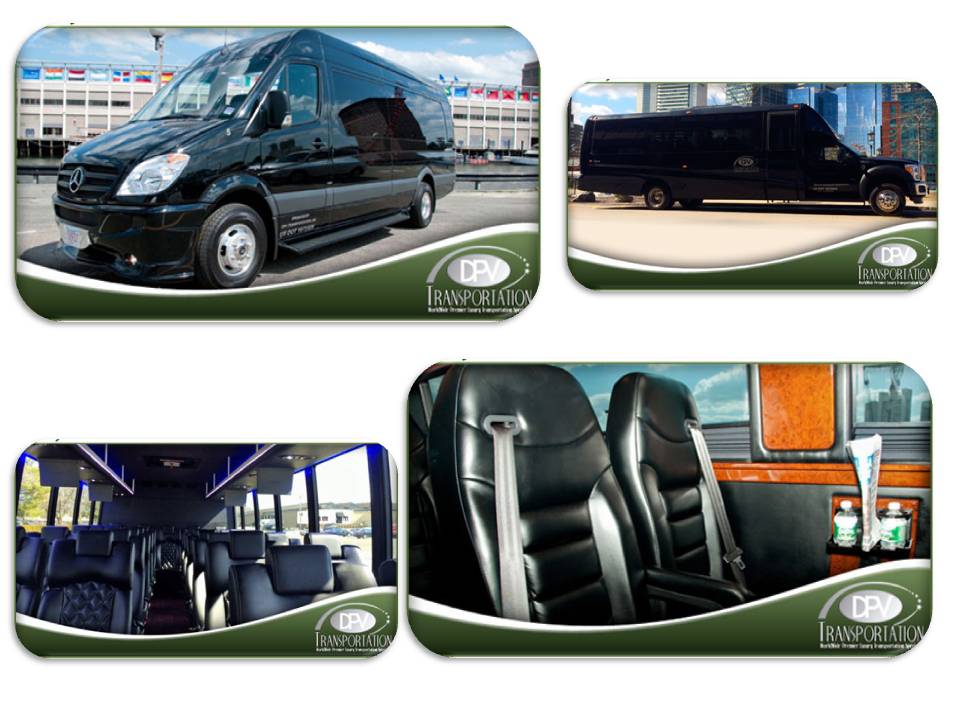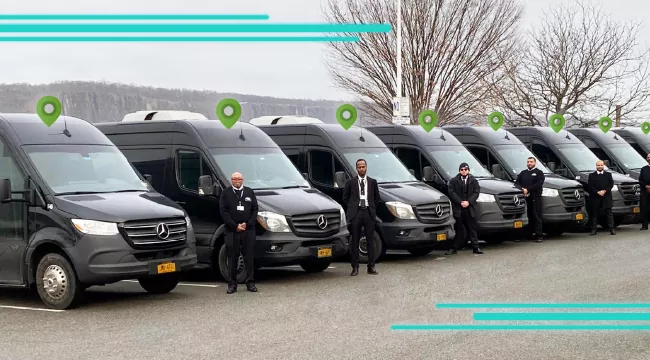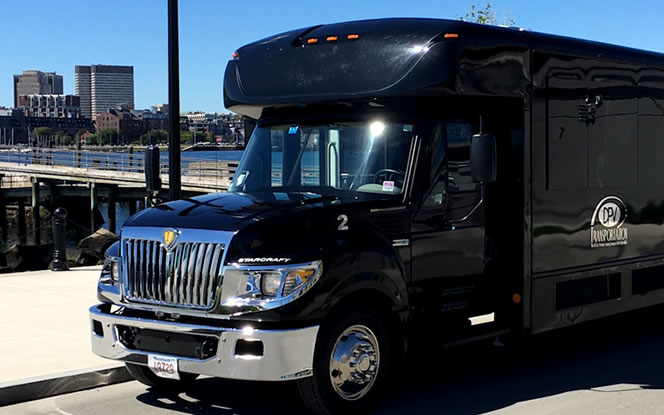As the wheels of progress turn, the transportation industry is steering towards sustainability, with DPV Transportation leading the way in Massachusetts and New York. In this comprehensive exploration, we’ll explore the sustainability trends in transportation and build upon the insights from recent articles to uncover key players’ sustainability efforts, essential terms, real-world case studies, environmental impact, government regulations, and the challenges and opportunities shaping the industry’s green future.
1. Industry Overview: Leaders Paving the Green Way
In the dynamic realm of sustainable transportation, visionaries such as Tesla, Uber, and DPV Transportation are reshaping the narrative. Tesla is at the forefront of the electric vehicle (EV) revolution. Beyond just redefining eco-friendly travel, Tesla’s commitment to sustainable energy extends to its innovative battery technology, which not only powers cars but has broader applications in renewable energy storage.
Uber’s dedication to transitioning its vast fleet to electric and hybrid vehicles is part of a larger strategy to revolutionize urban mobility, making it a prominent player in the ridesharing landscape. The company’s ambitious goals align with broader industry trends toward electrification and reduced carbon emissions.
DPV Transportation, a regional standout in Massachusetts and New York, is not just a passenger carrier—it’s an advocate for sustainable practices. DPV Transportation has pioneered a carbon emissions calculator, a tool designed to measure and reduce the carbon footprint of its services. Going beyond providing shuttle routes and transportation plans, DPV’s commitment to sustainability positions it as a catalyst for change in the industry.
In essence, these industry leaders are not merely navigating the currents of change; they are actively steering the transportation sector toward a greener and more sustainable future. Tesla’s cutting-edge EV technology, Uber’s commitment to fleet electrification, and DPV Transportation’s localized yet impactful initiatives collectively underscore a shared vision for a sustainable and eco-conscious transportation landscape.
2. Sustainability Trends in Transportation: Industry Innovations and DPV’s Calculator
In the fast-evolving landscape of sustainable transportation, many companies stand at the forefront, showcasing innovative solutions that redefine the industry. Let’s delve into these groundbreaking initiatives and explore other industry innovations driving positive environmental impact:
Sustainability Trends in Transportation: Redefining the Landscape
Beyond DPV Transportation, the industry witnesses a wave of innovations aimed at reducing carbon emissions and promoting sustainability:
- Electric and Hybrid Vehicles: Companies, including Tesla, are leading the way in adopting electric vehicles (EVs). The shift towards EVs represents a significant stride in reducing reliance on traditional fuel-powered cars and decreasing overall carbon emissions in the transportation sector.
- Autonomous Vehicles: The development and implementation of autonomous vehicles are gaining momentum. While this technology is still in its early stages, the prospect of autonomous transportation presents an opportunity to optimize routes, reduce traffic congestion, and enhance overall efficiency.
- Renewable Energy Sources: Many companies in the transportation and logistics sector are investing in renewable energy sources. This includes the use of electric energy instead of traditional gas or oil, contributing to a substantial reduction in the carbon footprint associated with transportation operations.
- Circular Supply Chain Models: Adopting circular supply chain models is a noteworthy innovation. This involves reusing and recycling waste products as inputs for other processes. By minimizing waste and optimizing resource use, companies contribute to a more sustainable and environmentally friendly transportation ecosystem.
- 3D Printing: The integration of 3D printing technology is another innovation. This technology helps reduce waste in the production and delivery of goods. By using 3D printing for certain components, companies can achieve greater efficiency and environmental sustainability in their operations.
- Transparency and Traceability: The emphasis on transparency and traceability in the supply chain is crucial for sustainability. Technologies like blockchain are being employed to create secure and transparent records of shipping transactions. This transparency allows consumers to make informed choices based on the sustainability practices of transportation providers.
- Sustainability Reporting Standards: The adoption of sustainability reporting standards is becoming more prevalent in the industry. Companies are proactively sharing information about their supply chain operations, including the use of greener ships, low-sulphur fuel, electric transportation, and other factors contributing to sustainability.
- Innovative Tools and Calculators: Innovations such as DPV Transportation’s Carbon Emissions Calculator represent a practical approach to sustainability. Tools like these enable organizations to measure their current carbon footprint, receive customized emission reduction plans, and actively work towards achieving their ESG goals.
These sustainability innovations collectively reflect a growing awareness and commitment within the transportation industry to address environmental concerns, reduce carbon emissions, and embrace eco-friendly practices in both logistics and passenger transportation.
DPV Transportation’s Carbon Emissions Calculator: Revolutionizing Sustainability Planning
At DPV Transportation, we’re not just redefining shuttle routes; we’re revolutionizing sustainability planning with our cutting-edge Carbon Emissions Calculator. Inspired by the industry’s sustainability trends, this calculator is a game changer, providing a comprehensive tool to measure and control carbon emissions. Here’s how it works:
- Measuring Your Carbon Footprint: The calculator allows universities in Massachusetts and New York, among other clients, to measure their current carbon footprint accurately. This measurement becomes the baseline for implementing strategic emission reduction plans.
- Customized Emission Reduction Plans: DPV’s calculator goes beyond measurement; it offers a customized plan to reduce emissions. By analyzing routes, optimizing transportation plans, and introducing eco-friendly vehicles, DPV ensures that clients can align with their Environmental, Social, and Governance (ESG) goals effectively.
- Driving ESG Goals: The calculator isn’t just a tool; it’s a catalyst for change. DPV Transportation actively supports universities in achieving their ESG goals, contributing to a sustainable and eco-friendly future for passenger carrying.
DPV remains committed to leading the way toward a greener, more sustainable future for transportation.
4. Environmental Impact: Greener Trails and Cleaner Air
To embrace the positive environmental impact of sustainability trends in transportation, companies in this sector collectively contribute to reduced carbon emissions, fostering improved air quality and environmental conservation. The adoption of electric and hybrid vehicles by major players, is instrumental in minimizing the industry’s carbon footprint. Sustainability initiatives are transforming the transportation landscape into one that prioritizes the planet’s health.
5. Gov Regulations: Navigating the Regulatory Highway
Governments globally are taking decisive steps towards sustainable transportation. Regulations and policies are shaping the industry’s trajectory. From emission standards to incentives for adopting eco-friendly practices, governments play a pivotal role in steering transportation towards a greener path. Understanding and complying with these regulations is imperative for companies like DPV Transportation to align with global sustainability goals.
6. Challenges and Opportunities: Paving the Way Forward
Sustainability, while presenting challenges, also unlocks opportunities. The transition to electric fleets comes with challenges in infrastructure development and consumer education. However, these challenges pave the way for innovation and economic growth. The industry is at a crossroads, offering opportunities for businesses to pioneer sustainable practices, enhance efficiency, and contribute to a greener future for passenger transportation.
Book a Consultation for Your Company’s Sustainability!
Ready to embark on a sustainable journey with DPV Transportation? Book a consultation with our GHG emissions calculator team. Measure your carbon footprint, create a customized reduction plan, and join us in driving towards a greener, more sustainable future in passenger transportation.
Key Terms: Navigating Sustainability Jargon
In the realm of sustainable transportation, a lexicon of key terms guides industry professionals and enthusiasts alike. Understanding these terms is crucial for navigating the landscape of eco-conscious passenger carrying. Let’s delve into the vocabulary that defines the sustainable future of transportation:
- Electric Vehicles (EVs): These are vehicles powered by electricity stored in rechargeable batteries. EVs are gaining prominence as a cleaner alternative to traditional fuel-powered vehicles, significantly reducing carbon emissions and contributing to a greener transport ecosystem.
- Carbon Footprint: The total amount of greenhouse gases, particularly carbon dioxide, that is released directly or indirectly by an individual, organization, event, or product. We emphasize the importance of businesses like DPV Transportation measuring and reducing their carbon footprint to align with sustainability goals.
- Emission Reductions: Strategies and actions aimed at minimizing the release of greenhouse gases and pollutants. Many companies in the transportation sector, including Uber, are actively engaged in emission reduction efforts, such as transitioning to electric and hybrid vehicles.
- Sustainable Logistics: This involves incorporating eco-friendly practices into transportation planning and implementation. From optimizing routes to adopting electric and hybrid vehicles, sustainable logistics is a key aspect of the industry’s shift toward environmentally responsible practices.
- Green Fleet: A fleet of vehicles, often in a corporate or municipal setting, that prioritizes environmentally friendly options, such as electric or hybrid vehicles. Uber is progressively transitioning its vast fleet into a green fleet, contributing to the broader sustainability goals of the ridesharing giant.
- Decarbonization: The process of reducing or eliminating carbon content. Many companies, in alignment with global climate goals, are actively pursuing decarbonization strategies. This includes transitioning to cleaner energy sources and technologies to minimize carbon emissions.
- Smart Mobility: Integrating technology and data-driven solutions to optimize transportation systems. Tesla, a pioneer in smart mobility, utilizes advanced technologies in its electric vehicles contributing to increased efficiency and sustainability.
- Circular Supply Chain: A supply chain model that focuses on reducing waste and promoting sustainability by reusing or recycling products and materials. We belive in the importance of adopting circular supply chain models in the transportation sector to enhance efficiency and minimize environmental impact.
Understanding these key terms is pivotal for anyone navigating the intricate landscape of sustainable transportation. As the industry progresses, a shared vocabulary ensures that stakeholders can actively participate in and contribute to the ongoing dialogue about creating a greener and more sustainable future for passenger carrying.
References:








